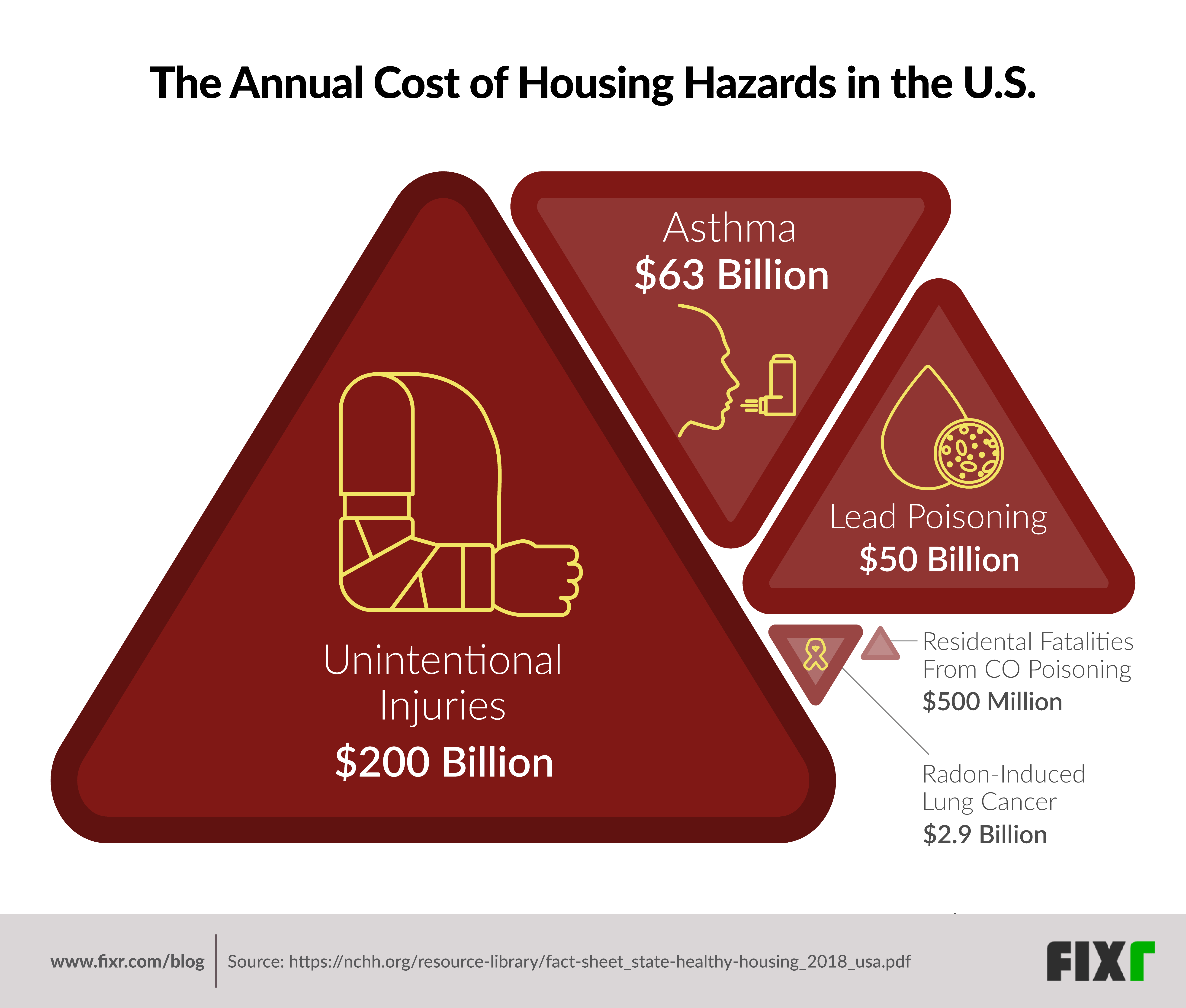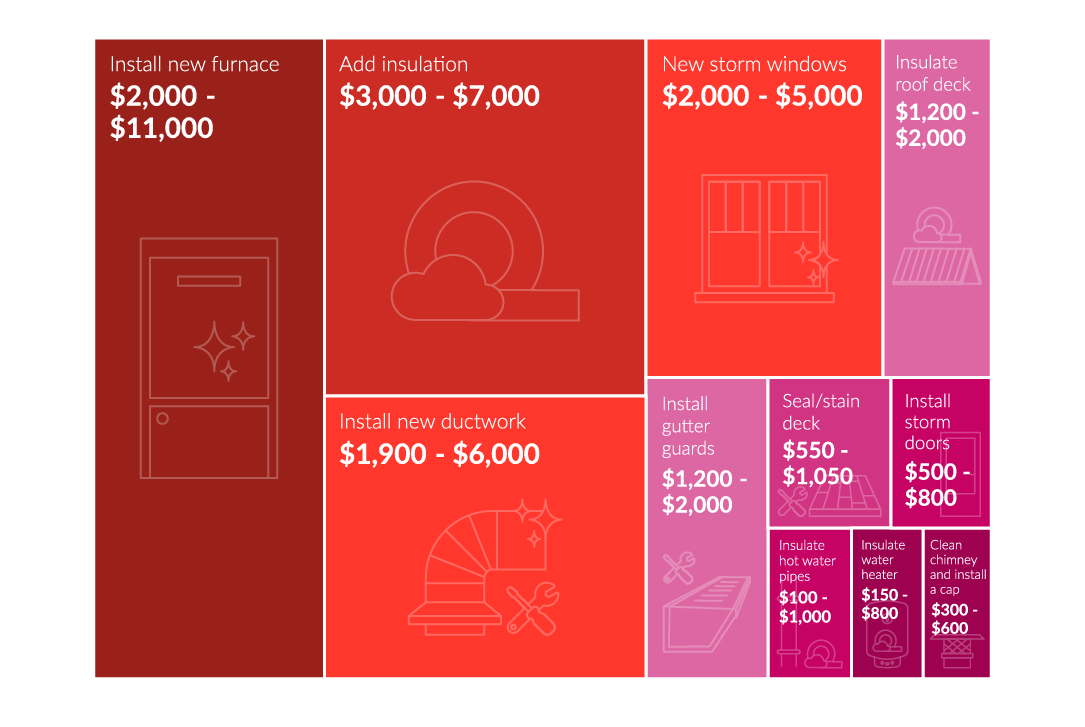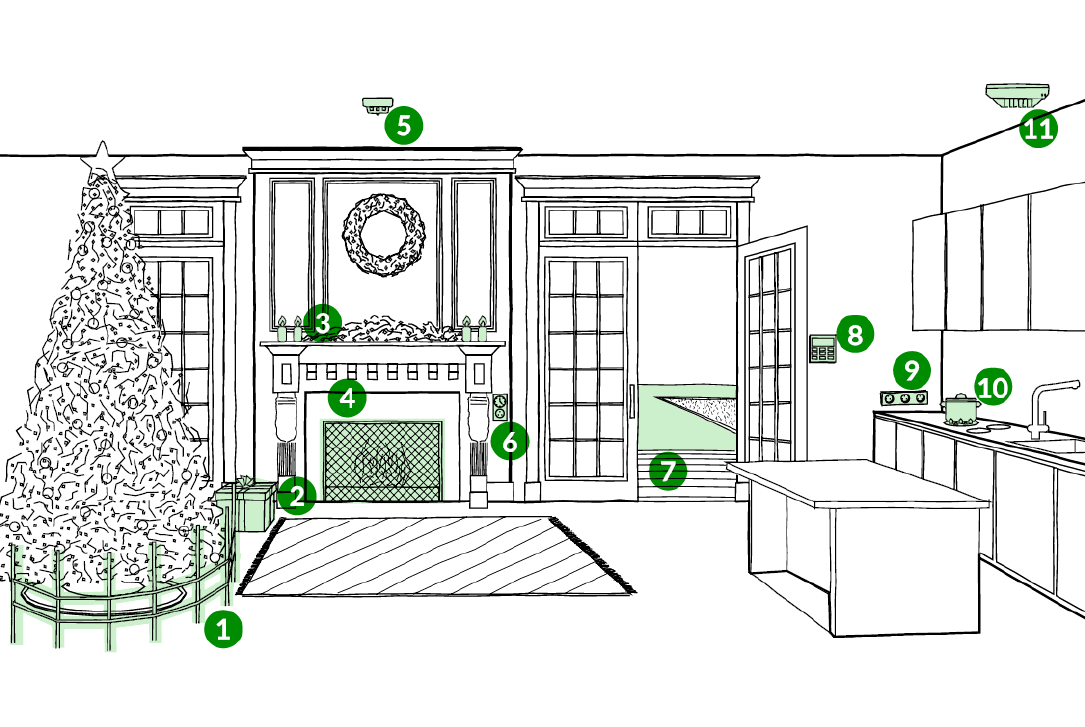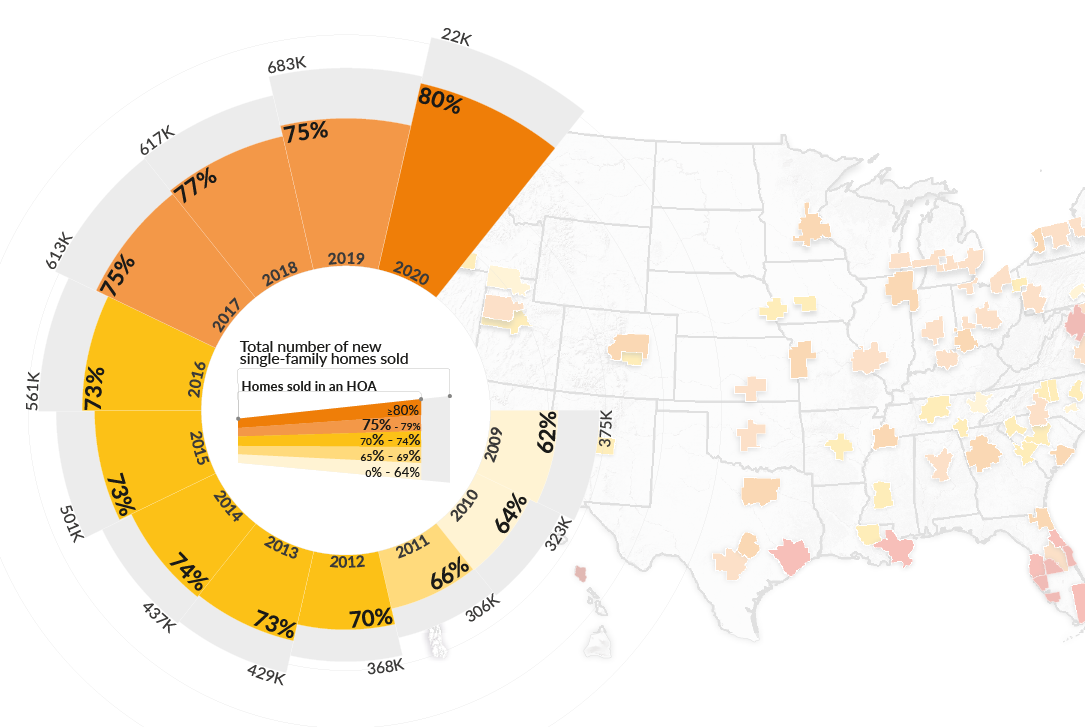Home. It’s where we feel safe. It’s where we feel protected from the outside hazards of the world. But, did you know that it is statistically one of the most dangerous places for your family? The home is susceptible to numerous problems such as mold, radon, exposed wiring, broken stairs, missing smoke detectors, etc. These problems can lead to numerous injuries and other health issues. Homeowners should be aware of the potential issues that can have the biggest impact on the safety of their homes so that corrective and preventative measures can be taken.
Your Home Could Be Harming Your Health
The health issues that can arise from hazards in your home can cost you significantly. It is estimated that housing hazards are responsible for billions of dollars in medical bills every year. Some of these health issues are from hazards that are from known hazards, while others that top the list are a bit of a surprise. Taking a look at this graphic, we see that unintentional injuries top the list, costing $200 billion annually. However, we see surprising health issues such as radon-induced lung cancer ($2.9 billion) and residential fatalities from CO poisoning ($500 million) also making the list.

All of this data is pulled a 2018 report from the National Center for Healthy Housing (NCHH), a non-profit organization focused on securing healthy homes. They estimate that nearly 6 million U.S. families live in homes that are below the standards found in a developed country. These homes have issues such as broken heating and plumbing, leaking roofs, bug and rodent infestations, foundation problems, etc. Meanwhile, millions of others throughout the U.S. are living with hazards in their homes that are having a serious impact on their health.
The Real Cost of Housing Hazards
It can be hard to believe that 53 million U.S. homes put their occupants at risk for major health issues. This shows how important those little “problems” really are and why they need to be addressed. While this report highlights the monetary cost of these housing hazards, the actual cost (read: your health) is also significant.
Unintentional Injuries
No one intends to get injured. However, oftentimes we leave little things go in our homes that wind up causing injuries. Whether it’s a broken step, a loose floorboard, a window that slips, or wires that need re-covering, injuries can happen at any time. These injuries may include falls, cuts, scrapes, broken bones, sprains, etc. It is estimated that more than one in four older adults experience unintentional falls every year. While older adults may be more susceptible to such injuries, the truth of the matter is that anyone can get injured in your home, especially if it is not properly maintained.
Asthma
Asthma is where an individual’s airways swell and produce extra mucus, resulting in difficulty breathing, coughing and shortness of breath. Environmental factors in the home are a major cause of asthma. Such factors include airborne substances like mold, pet dander, dust mites, etc., as well as air pollutants and irritants like smoke. While many times asthma symptoms can be managed, complications can lead to sick days from work and school, trouble sleeping, working, and participating in other activities. More serious complications can lead to airway remodeling (permanently affecting the way one breathes) or even hospitalization.
Lead Poisoning
When lead, a heavy metal, builds up in the body, an individual can suffer from lead poisoning. Lead can enter the body by being inhaled, by entering the mouth, or even through mucous membranes or cuts. Exposure to lead-based paint is a common cause, which is especially problematic in homes built before 1978. Other causes of lead poisoning include lead-based water pipes (typically found in older homes), lead-based dust, and even possibly cigarette smoke. Often lead poisoning is the result of exposure and a gradual build-up in one’s body. Lead poisoning can damage the kidneys and central nervous system, slowed growth in children, hearing loss and reduction in senses, neurological weakness, loss of a pregnancy, mood disorders, and in worse case scenarios, death.
Radon-Induced Lung Cancer
Radon is a gas that is radioactive, produced by the natural decay of uranium, thorium, and radium found in soil and rocks. It is a completely odorless and tasteless gas that is invisible. The gas makes its way out of the ground and diffuses into the air or even into groundwater. Naturally, there is always a low level of radon outdoors. However, when there is a lack of ventilation these levels build up. Radon can seep into homes through cracks in the foundation, the floor, or the walls. It can also build up in wells. The buildup of radon can be especially problematic in homes that are built in areas rich in the elements that breakdown into radon and in homes that are well insulated and tightly sealed. When you inhale the small radioactive particles released as radon decays the cells lining the lungs are damaged. Long-term exposure can lead to the development of lung cancer. While the risk is relatively low, radon exposure is still the second leading cause of lung cancer in the U.S., accounting for 15,000-22,000 lung cancer deaths annually.
Residential Fatalities from CO Poisoning
CO poisoning, or carbon monoxide, is a lethal gas that is both colorless and odorless. Carbon monoxide is produced anytime fuel is burnt, whether it is a gas stove/range, grill, fireplace, or furnace. Clothes dryers and water heaters can also produce carbon monoxide. This gas can build up in the home and poison all residents, including pets. This build-up is more likely in homes with inadequate ventilation. A buildup of carbon monoxide is problematic as it can cause the blood to not carry enough oxygen to meet the body’s needs. Depending on an individual’s health and their exposure level, they can lose consciousness, have seizures, or die. It’s also important to note that more than a third of carbon monoxide related deaths occur when the victim is asleep.
These Housing Hazards and Health Issues are Preventable
The good news is that while these housing hazards can have serious consequences, they are preventable and solutions for correcting them are affordable and provide a significant return on investment. The first step is to take care of any issues as soon as possible. This will help minimize the risk of having any unintentional injuries or buildup of any gases. Here are some simple steps you can take to avoid these most common housing hazards:
1. Strip your walls of paint and repainting (using all necessary precautions). If you have an older home, it will be well worth the time, effort, and money.
2. Make sure the home is well-ventilated is another important step in addressing these housing hazards and preventing any potential disasters. You can do this by:
- Getting a ventilation system installed, cleaned, or updated.
- Making sure the furnace is installed properly.
3. Install alarms and double-check all existing alarms are in working condition. Alarms to continuously monitor for smoke, carbon monoxide, and radon are all relatively affordable and can be picked up from any home improvement store or online.
Take the time to evaluate your home and make sure that you take all necessary precautions to reduce you and your family’s risk of becoming the victim of these housing hazards. These measures are simple, yet effective, ways to avoid these serious issues that can have devastating results.




